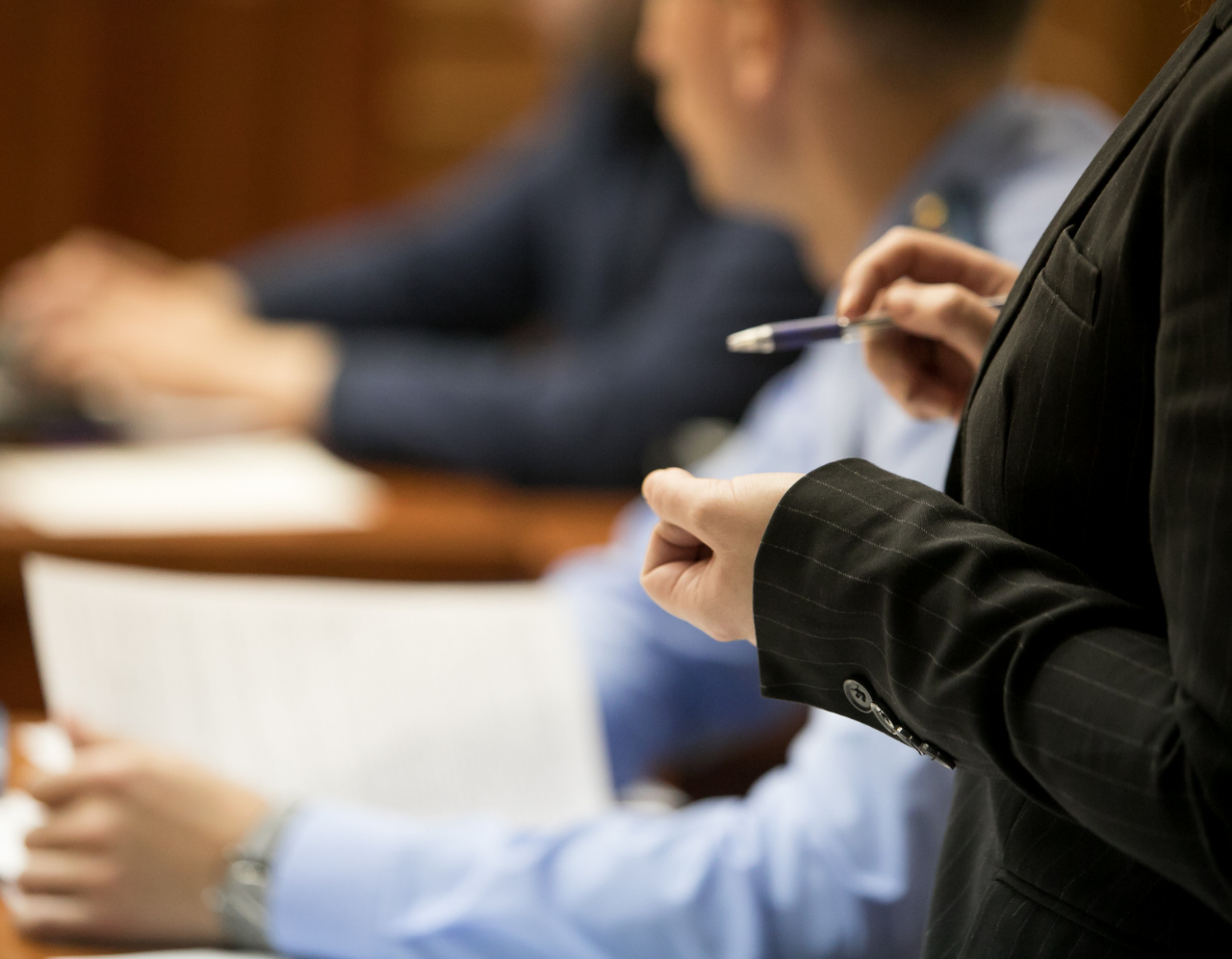Exactly how to Improve Your Case with Compelling Trial Presentations: Specialist Tips for Lawyers
Exactly how to Improve Your Case with Compelling Trial Presentations: Specialist Tips for Lawyers
Blog Article
Browsing the Intricacies of Test Presentations: Tips for Seamless Shipment and Compelling Debates
In the world of legal procedures, the art of test presentation stands as an important factor of success. The complexities fundamental in trial discussions call for a fragile equilibrium of skill, finesse, and method.

Comprehending Trial Goals
To successfully browse a test, it is crucial to have a clear understanding of the goals that need to be accomplished. Prior to entering the courtroom, legal groups must define their objectives and desired results. These objectives act as guiding concepts throughout the test, shaping methods and affecting decision-making procedures.
Recognizing test purposes involves a comprehensive evaluation of the case, legal precedents, and the customer's best passions. Trial Presentations. It calls for a meticulous assessment of the realities, recognizing vital issues, and expecting prospective difficulties. By establishing details and measurable goals, attorneys can customize their arguments and discussions to line up with the desired results
Additionally, a clear grip of test purposes allows lawful teams to prioritize proof, witnesses, and legal disagreements properly. It permits the advancement of a meaningful narrative that resonates with the judge and jury, enhancing the overall situation discussion.

Organizing Evidence Successfully
Having a clear understanding of trial goals lays the structure for organizing evidence effectively in lawful proceedings. By lining up the presentation of proof with the preferred outcomes of the trial, legal groups can enhance their arguments and boost their persuasiveness.
An additional secret component in arranging evidence efficiently is developing a rational circulation. Providing evidence in a consecutive and systematic way can help build an engaging narrative that sustains the legal debates being made. Furthermore, making use of aesthetic help such as timelines, charts, or charts can better boost the company of proof and help in clarifying complex connections or sequences of events.
Moreover, making certain that all evidence offered is permissible and appropriate to the situation is important. Irrelevant or inadmissible evidence can diminish the stamina of the disagreement and potentially damage the trustworthiness of the offering event. A careful testimonial and option process ought to be carried out to consist of only the most impactful and legitimately sound evidence in the test discussion.
Crafting Persuasive Narratives
Crafting engaging narratives plays an essential function in providing persuasive arguments during lawful proceedings. A well-crafted narrative has the power to astound the target market, evoke feelings, and ultimately guide the decision in support of the providing event. When building a narrative for a trial presentation, it is necessary to establish a clear storyline that highlights vital factors and attaches them in a try this website systematic fashion. Begin by outlining the truths of the case in a compelling manner, making sure that the series of events is very easy to comply with. Introduce characters effectively, providing background info that aids the audience comprehend their activities and motivations. In addition, incorporating brilliant summaries and engaging language can bring the story to life, making it a lot more unforgettable for the judge and jury. By weaving together evidence, testimony, and lawful disagreements into a convincing and natural narrative, legal specialists can successfully advocate for their customers and boost the likelihood of a positive outcome in the courtroom.
Understanding Visual Help
Efficient use aesthetic help is key to boosting the influence and clearness of trial presentations. Aesthetic aids, when utilized strategically, have the power to streamline complicated information, enhance essential factors, and leave a long-term impact on the judge and jury. To understand aesthetic help in test presentations, it is important to make sure that they are clear, succinct, and appropriate to the debates being made.
When including aesthetic help, such as charts, timelines, charts, or photographs, right into a test presentation, it is important to keep them aesthetically appealing yet specialist. The visuals ought to enhance the verbal arguments, giving a graph of the info being reviewed without overwhelming the audience with unnecessary details.
In addition, practicing with the visual aids in advance is important to guarantee a seamless distribution throughout the trial. Familiarizing oneself with the material, transitions, and timings of each visual help can aid maintain the circulation of the presentation and avoid technical glitches that may occur.
Providing Impactful Closing Debates
An engaging closing argument serves as the conclusion of a trial presentation, encapsulating the core story and encouraging the court and court towards a favorable decision. Begin by describing the primary disagreements that sustain your customer's setting, stressing why the evidence provided throughout the trial supports your story.
Moreover, including emotional allure can even more enhance your closing disagreement. Ultimately, a well-crafted closing argument must leave a lasting perception, compelling the judge and court to rule in your customer's support.
Final Thought
To conclude, understanding trial discussions entails understanding objectives, arranging proof, crafting narratives, utilizing visual aids, and delivering impactful closing disagreements. By implementing these approaches successfully, lawyers can present their situation effortlessly and make compelling arguments in the court room. he has a good point It is crucial to browse the intricacies of test discussions with precision and ability to achieve success in lawful proceedings.
By straightening the presentation of proof with the wanted outcomes of the More Help test, legal teams can enhance their disagreements and boost their persuasiveness (Trial Presentations). To grasp visual help in test discussions, it is essential to make certain that they are clear, succinct, and pertinent to the arguments being made
A compelling closing disagreement serves as the end result of a trial discussion, encapsulating the core narrative and persuading the judge and court in the direction of a positive decision. Begin by describing the primary disagreements that support your client's setting, stressing why the proof offered throughout the trial supports your narrative.In conclusion, understanding trial presentations entails comprehending objectives, arranging evidence, crafting narratives, utilizing aesthetic aids, and supplying impactful closing disagreements.
Report this page